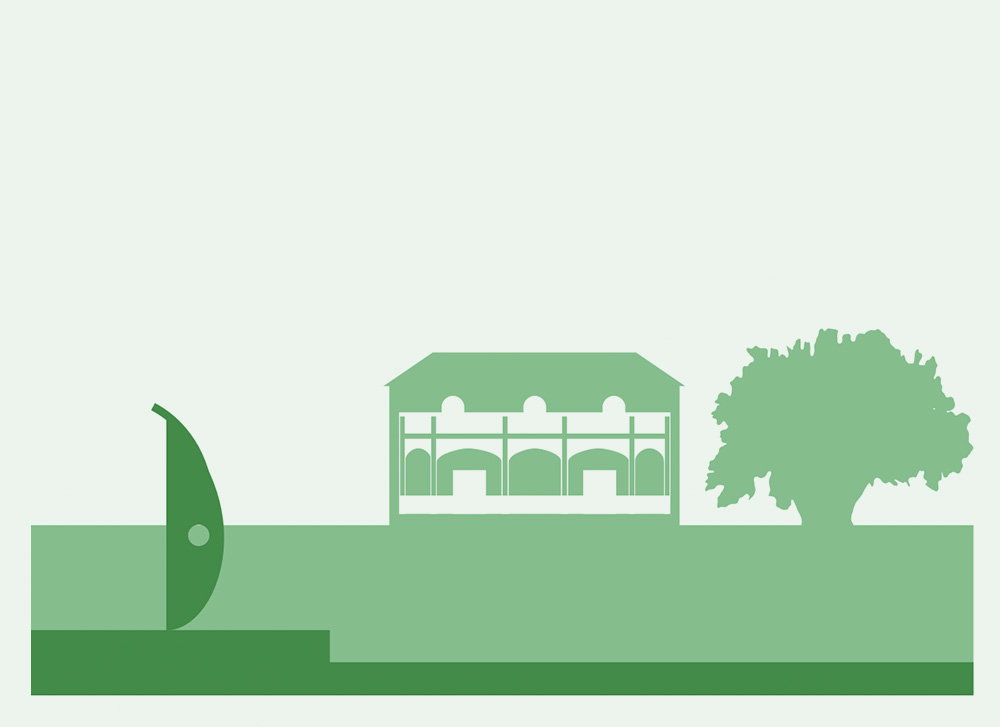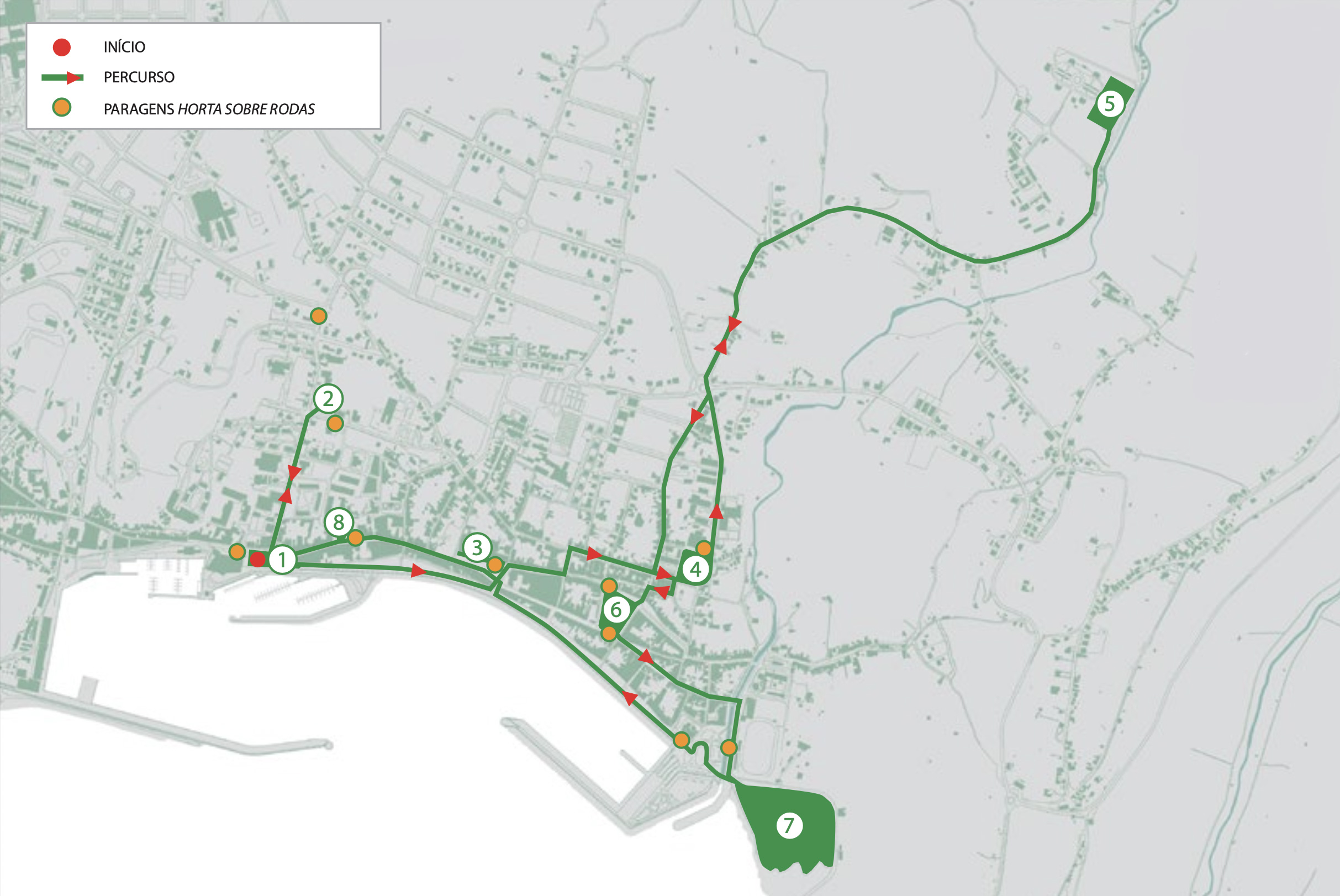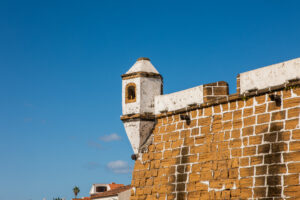
Horta and the Gardens – The Squares and the Gardens
This itinerary assembles the most important public green spaces of Horta, allowing you to discover its classified species.
Horta has always been praised for its botanical arrangements. From the lush quintas (country houses) mentioned by Raul Brandão in “As Ilhas Desconhecidas” (“The Unknown Islands”), to the verdant patios, and the extensive and luxuriant properties of the Dabney family.
Today, it is possible to find remarkable species in the public green spaces that make up Faial’s plant heritage, namely the araucaria also known as norfolk island pine (Araucaria heterophylla) and the dragon tree (Dracaena draco L.).
- Horta
- Average duration of 4 hours
- Some locations are subject to opening hours.
- Low difficulty level
1. Praça do Infante
A small port known as Beliago used to stand in this square, disappearing in 1675, following the expansion of the defensive wall of Horta. These works later created this garden space.
Initially it was known as Largo de Neptuno, but in 1894 the name changed to Largo do Infante Dom Henrique on the celebration of the 5th centenary of Infante Dom Henrique’s birthdate, the greatest benefactor of the Portuguese Discoveries in the 16th century.
In 1940, a statue of the Infante was inaugurated, being replaced two decades later by the current bust made by the sculptor Numídico Bessone. It is framed by a black basalt wall, where the motto of the Infante’s house can be read: Talent de bien faire.
Here you can find magnificent Canary Island date palm trees (Phoenix Canariensis), a species classified and protected by law. These date back to 1898, when the square was reconstructed due to a storm.


2. Cedar’s House Garden
The gardens of the Dabney’s properties were widely well-known throughout the 19th century for their beauty and lavishness, holding numerous and diverse botanical species (fruit and ornamental trees, bushes, flowers, aromatic plants, among others). The family was also responsible for the introduction of several new species in the Azores, namely the norfolk island pine, also known as araucaria (Araucaria heterophylla), now a classified species.
The so-called Cedar’s House earned this designation precisely because of the cedar (cedrus sp.) Part of the garden is private property, but an astonishing specimen of ombú (Phytolacca Dioica), currently protected by law, remains in its green spaces in addition to other species of great value.
3. Largo Duque de Ávila e Bolama
This square was initially known as Largo do Colégio, as it is located in front of the former Jesuit College. Later, in 1871, it was renamed in honour of António José d’Ávila, an important politician from Faial. In 1970, a statue by the sculptor Numídico Bessone was inaugurated here.
Today, on the square’s cobblestone, it is possible to observe several motifs in Portuguese pavement, with themes alluding to Faial, such as the windmills and the iconic senhoras de Capote (women wearing the traditional costume Capote).


4. Jardim Florêncio Terra
Inaugurated in 1857, this garden was created on the site of Convento de São João, a convent which was demolished in 1836. It was initially called Passeio Público (Public Promenade) and later Jardim Público (Public Garden), until 1964, when it was renamed in honour of the renowned journalist and writer from Faial, Florêncio Terra.
Built in romantic style, it displays a bandstand from the late 19th century, surrounded by a small lake and four statues representing the four seasons.
In this garden there used to be four specimens of dragon trees (Dracaena draco), a classified species, whose treetops joined together. They ended up, however, being damaged during a storm. Currently, a large specimen still remains, as well as an araucaria or norfolk island pine (Araucaria heterophylla), also a classified species.
5. Jardim Botânico
Faial’s Botanical Garden has been charming visitors since 1986. Built on an old farm named Quinta de São Lourenço, it has an area of about 8,000 m² in its central cell and 60,000 m² in its high-altitude cell, in the parish of Pedro Miguel.
The botanical garden makes an important scientific, educational, ecological and leisure contribution, being a unique infrastructure in the Azores. In addition to being a wonderful must-visit of unique beauty, it is also a space dedicated to the conservation and study of the Azores’ rich natural flora, to raising awareness, information dissemination, and environmental education.
Visiting Faial’s Botanical Garden is to relive the history of the Azores, of the times of the first settlements, and of the use of plants by man. It holds a vast collection of natural flora, an area reserved for historical agricultural crops and for the main invasive species, a beautiful orchid garden, and a collection of medicinal plants and aromatic herbs.


6. Praça da República
This garden is established in the space where, until the late 19th century, the old Convento da Glória existed. It was named Largo da Glória in memory of this convent, and later Largo Dom Carlos I, due to the king and queen’s royal visit, Dom Carlos I e Dona Amélia accompanied by the queen D. Amélia (Amélie of Orléans), in 1901. In 1910, with the establishment of the Portuguese Republic, it received the current designation of Praça da República.
It was redesigned in the 30’s, with a traditional red and white bandstand, and a small lake encircled by lava stones. Near the lake there is a basaltic rock, on which a copper medallion can be found honouring João José da Graça, pioneer of journalism and press in Faial.
Currently, several classified species can be found here, including ginkgos (Ginko biloba) and Norfolk Island pines (Araucaria heterophylla).
7. Parque Vitorino Nemésio
Known as Parque da Alagoa, it is the largest urban park in the city. Here one can enjoy a variety of leisure activities, sports, as well as beach activities, since Praia da Conceição is right beside this pleasant green area.


8. Jardim do Comendador Eduardo Bulcão
In 1926, Commander Eduardo Laemmert Bulcão, having deemed the former Largo de São Francisco as poorly adequate, decided to carry out construction work in the square.
Due to his contribution to the embellishment of the city, the Town Hall of Horta renamed it in his honour, in 1939.




